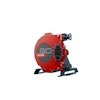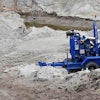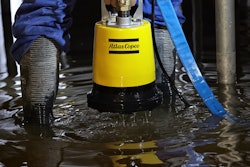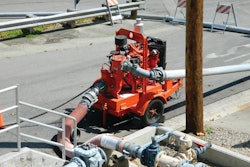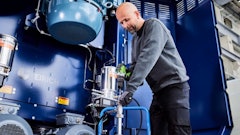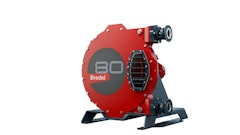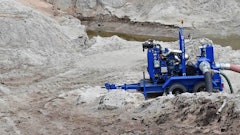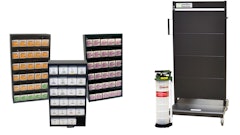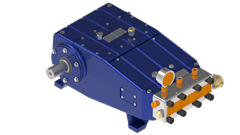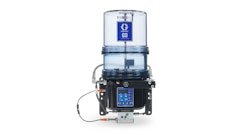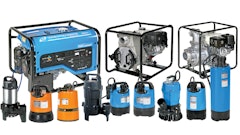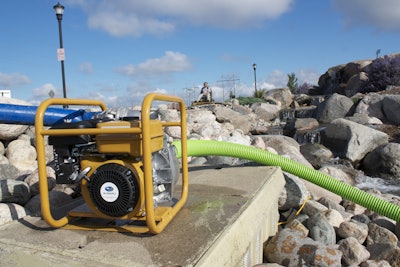
It has been said, “You don’t know what you’ve got until it’s gone.” This concept can be all-too-familiar for anyone who has ever neglected a pump. A dependable pump isn’t truly appreciated when it’s working properly but that dependability is really missed if a pump’s performance declines, or worse, the unit stops working altogether. To avoid pump downtime and subsequent headaches, a preventive maintenance program must be followed.
Start each day with a pump inspection. Among the most important daily checks is the quality and level of engine oil. Oil that’s dirty can cause serious problems and decrease the life of an engine; likewise, if there’s an insufficient amount of it. Change the oil or add if necessary to reach the level as per manufacturer recommendation.
Check the gasoline level as well, making sure the tank is full, or at least full enough for the day’s usage. Also look for any evidence of fuel or oil leaks. If a fluid is dripping, inspect the area for any parts that may need to be tightened or replaced.
Cleaning or possibly changing the air filter is another important practice that can prevent significant damage. A clogged, wet or dirty air filter can lead to a loss in power and shorten the life of an engine by allowing dirt or water into sensitive areas. A foam element can be cleaned and reused, so it’s fine to check daily. If the filter has been damaged or is missing chunks, replace it. For paper air filters, operators should follow a recommended schedule for replacement in a timely fashion.
Inspect the condition of the hoses regularly, as well. If they are worn, frayed or have any holes, the air gaps will likely cause the pump to lose suction. Patch any holes and seal leaking joints. A severely worn hose should be replaced. Finally, check the rest of the machine for broken bolts, nuts or loose parts.
Of all the pre-operation checks, perhaps the most important thing to remember for daily maintenance is priming the pump before starting. Running a pump dry will damage the seals, causing a chain reaction of further problems. If it’s a self-priming pump, simply add water. The term “self-priming” is somewhat of a misnomer, as water must be added to the pump each time it is used. The pump will then take over, build pressure within the volute and begin discharging.
Less-frequent Checks
Once the pump has been prepped, it’s ready to go to work. In addition to daily checks, a pump requires other maintenance checks and services. While those don’t need to be done daily, they are crucial to the pump’s life and should be kept up with on a regular schedule. Generally, quality pump engines can operate for a few thousand hours, and following recommended maintenance schedules can only increase that time and the pump’s ROI.
A few things need to be checked a couple of times a month, others even less frequently. For instance, a paper air filter should be changed when needed. Although a foam filter can be cleaned and re-used, when it begins to disintegrate or come apart, replacement is necessary.
Dirty spark plugs can cause a decrease in power and poor starting performance, so the spark plugs should be checked semi-monthly for oil residue, dirt, damage or excessive carbon buildup. Clean spark plugs with a wire brush or spark plug cleaner. Immediately replace any spark plugs with cracked porcelain.
On an annual basis, give the pump a thorough inspection for dirty, broken or misaligned parts. Such parts can cause problems with the engine or pump components. Inspecting the entire machine gives the most comprehensive view of what needs to be cleaned and repaired.
It’s also worth noting that dusty conditions typically shorten the length of time between regular services, as extreme dust can clog filter elements or contaminate fuel and oil. Depending on the pump’s environment, maintenance schedules may need to be adjusted to accommodate for less than optimal conditions.
Tips For Troubleshooting
Even with a regular, proper preventive maintenance program, pumps may still experience problems. This is unfortunate, but common. Knowing what to look for and addressing it quickly will keep the problem from becoming a more expensive, time-intensive repair.
If a pump won’t start, the culprit is likely the impeller or engine. If the impeller is sticking, simply disassemble it by taking the pump cover off, clean and reinstall. As for the engine, several different things could affect it and prevent if from starting.
The first thing to check is the spark plug. If it’s dirty with oil residue, gas or carbon, clean it. If it’s damaged, replace it. If it’s clean and damage-free, connect it to the plug cap and ground the plug against the engine body. Pull the starter to see if the spark is weak or nonexistent. If a new or cleaned plug doesn’t spark, the ignition system could be faulty and may need replacement.
The engine also might not start if the spark plug is loose or if the plug is wet with fuel. If the spark plug is wet, check to see that the fuel cock is closed. If so, close the choke lever and pull the starter handle a half-dozen times to see if the electrode becomes wet. If the electrode is dry, the problem may be with the fuel intake of the carburetor. Try to see where the fuel stops in the engine.
A number of other things could cause a pump to not self-prime. Start by checking for air leaks on the suction side of the pump; tighten the suction hose or pipe, if needed. Check the drain plug, as well, to ensure that it has been tightened completely. Insufficient water inside the pump casing will also prevent the pump from priming.
Engine speed can affect pumping volume, as well. If the pumping volume has dropped, the suction hose may be too long or loose parts on the suction chamber may need re-tightening. This might also be caused by a high suction lift that would need to be lowered, water leaking from the water passage, a worn or broken mechanical seal or a drop in engine output or speed.
Adopting a proactive preventive approach ensures that crucial maintenance services won’t be neglected, preventing a domino effect of problems as the pump goes down, time is lost and repair costs add up. It’s simple and straightforward - pump maintenance now will mean fewer issues later. Following a good maintenance program, such as the steps detailed above, is among the best and most inexpensive ways to keep a pump flowing.
Pam Meyer is equipment sales manager, Subaru Industrial Power Products.

